Welcome to THE most in-depth lesson on the Japanese Hirajoshi Pentatonic Scale. Today we’re heading to the far east to unearth some inspiration. We’ll look to master this ancient sound firstly by learning the theory, intervals and shapes of this scale and then we’ll show you some killer ways to use it.
These Japanese style pentatonic scales are easy to learn because they feel so similar to the traditional pentatonics and dominant pentatonics. This scale will open up new ideas therefore imbuing your playing with an exotic new sound.
If you know your pentatonic scales then learning this Hirajoshi scale will be an exciting addition to your modal arsenal. Additionally if you know your Major Scale & Harmonic Minor Modes then you’ll find that Hirajoshi can be found within these scales as well. Use the Stage Select below to begin!

Contents for This Lesson:
Use the links below to jump to the section of interest on this stage. Or start from the top to explore the whole lesson.
01: Origins of Hirajoshi →
02: Scale Theory & Harmony →
03: Basic 2nps Shapes →
04: Finding Hirajoshi →
05: Other Exotic Pentatonics →
06: Extended Shapes & Ideas →
07: Oriental Chords & Arps →
08: 7 & 8 String Versions →

Origins of The Hirajoshi Scale
With its origins hailing from ancient Japanese shamisen music, the Hirajoshi scale was derived from these sounds for accurately tuning the Koto. The Koto is a Japanese instrument typically with 13 strings. You will find that this scale has many different names depending on what region of Japan in which it originates. However it’s the same musical scale.

Hirajoshi Pentatonics: Intervals
As is true for any scale, a thorough understanding of it’s intervals will unlock the secrets inside. Once you know the intervals you can determine what other arpeggios, chords & exotic sounds can be found within. From each note of this scale (and any scale) you can stack intervals, typically 3 or more to derive chords and arpeggios.
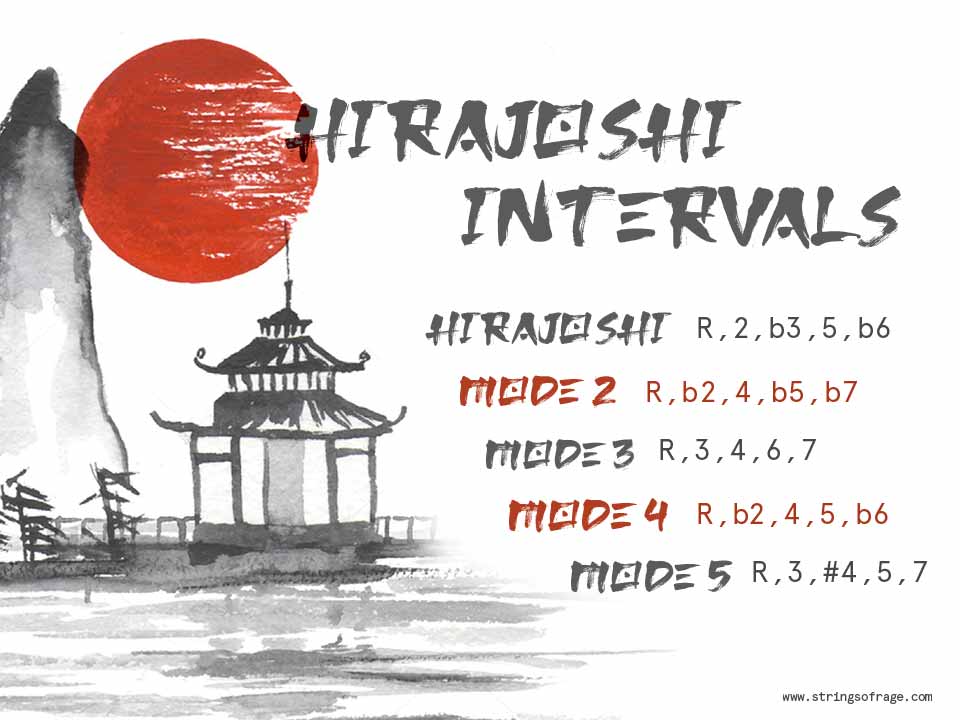
Hirajoshi Pentatonic Scale Harmony
When building chords remember to treat each mode with it’s own root note. For each mode that you’re building chords from the intervals will change and therefore yield a different set of results that are possible. Given the intervals here you’ll find you can derive some really oriental type sounds with this scale, especially if you dig deep into inversions and possible voicings. Don’t be afraid to add in notes from outside of the scale as well!
For reference we’ll use the key of A Hirajoshi for all the examples in this lesson.

Reference Key of A:
Notes: A, B, C, E, F
Intervals: R, 2, b3, 5, b6
Let’s now check out the basic 2nps shapes of Hirajoshi scale in the key of A. Remember that for each mode the first note of the mode will become the root. The idea with any mode is to treat it as it’s own unique scale. By doing this you can yield a whole new set of sounds and even a key centre.
Hirajoshi only has 5 notes, therefore it is considered a pentatonic scale. Once you’ve nailed these down we’ll move onto some cool ways you can extended these across the neck.

Crouching Tiger Hidden Modes: Referencing The Major Scale Modes
If you know your major scale modes then you will likely notice that you can derive these ancient Japanese sounds directly from these modes. This will open up many possibilities for your lead playing because you’ll seamlessly be able to jump between sounds and tonalities.
On top of this you’ll also realise that you can play the Hirajoshi Scale & it’s mode over chords derived from the major scale modes. This immediately gives you a starting point to start using Hirajoshi in your playing.
Unearthing the Hirajoshi Scale
The Hirajoshi scale can be derived from two sets of scales and modes. Both the Major Scale Modes & Harmonic Minor contain Hirajoshi. Interestingly, you cannot find Hirajoshi within any of the Melodic Minor Modes.
In order to find ‘exotic’ pentatonic scales within other scales and modes you need to look at the intervals of the pentatonic and then ask yourself, what scales or modes also share these intervals? You can then ‘fill in’ the other two missing intervals to find out what scale and modes share the pentatonic intervals. You’ll usually find there are multiple hiding places for pentatonics.
Derived From The Aeolian Mode – 6th Mode of the Major Scale
Root position Hirajoshi can be taken from the Aeolian Mode. Aeolian is the 6th Mode of the Major Scale, also known as the natural minor scale. Minor 6th & Minor 13th chords are you modal chords here. You can of course get your standard minor 7th chord from Aeolian too but if you’re thinking modally you’re going to want the flat 6th in there. Especially as this is Hirajoshi too.
Derived From The Locrian Mode – 7th Mode of the Major Scale
Mode two of Hirajoshi can be pulled out of the Locrian mode – Locrian, for some reason, is quite often avoided as a major scale mode. A lot of players seem to be afraid of it. We’ve embraced this scale to show how you can actually do some cool stuff with it.
Minor 7b5 is your main chord here but you could also voice it to include the flat two or flat 9th. Further to this you could even include the 4th in your chord or riff, again this since this is within this Hirajoshi mode it helps to bring out the colours of this sound.
Derived From The Ionian Mode. Also Know as The Major Scale
This pentatonic mode is definitely one of the brighter, happier oriental sounds of the set. This is derived from the Major Scale. The interesting thing here is that there is no fifth and no second within this pentatonic mode. This lends itself perfectly to use over sus4 chords.
If you want to use the fourth and the 7th then you could consider this a major 11th chord. Alternatively you’ve got a major 7th shell voicing in here since there’s no fifth. A shell voicing is just a chord with no fifth. There’s lots of options here.
Derived from The Phrygian Mode – 3rd Mode of the Major Scale
The intervals of this pentatonic mode can only be derived from the Phrygian Mode. The 3rd mode of the Major scale. There’s no other scale within the Major Scale Modes that shares these intervals. The Phrygian sound is usually characterised by the minor triad followed by a major triad a half step higher.
That’s the typical sound you hear a lot. There’s much more to be explored from Phrygian as well as this pentatonic mode and there’s some really nice dissonant oriental chords you can get from this mode too.
Derived From The Lydian Mode – 4th Mode of the Major Scale
The Lydian mode is always a favourite. The Lydian mode has many majestic qualities about it already but using it with this Hirajoshi mode will open up new possibilities. Make sure you’re using the #4 in your chords. This is the secret sauce to the Lydian mode as well as this Hirajoshi mode. Major 7th #11 chords are usually a go to for lydian chord progressions.
Hirajoshi Within Harmonic Minor
You can also pull the Hirajoshi scale from the Harmonic Minor Scale and The Harmonic Minor Modes. This is particularly interesting because the Harmonic Minor modes yield a completely different set of chords compared to the Major Scale Modes. You’ll find more dissonance with these chords which lends itself to an exciting use for modern players.
This also means that you can play Hirajoshi and it’s modes over chords that you can build from both of these scales. These ‘altered pentatonics’ will be a new source of inspiration that should be explored to max.

Similarities to Major b6 Pentatonic & Minor b5 Pentatonic Scales
If you’re a real die hard fan of exotic pentatonic scales like we are you’ll hopefully notice some similarities to other scales. Root position Hirajoshi is very similar both in sound and interval structure to the major b6 pentatonic scale. Whereas the 5th Mode of Hirajoshi is also very similar to the Minor b5 Pentatonic scale.
Major b6 and Minor b5 are the Pentatonics of The Melodic Minor Scale. If you don’t know those it would definitely be worth checking them out. We’ve found them to be an inexhaustible source of new ideas and possibilities.
Both the major b6 and minor b5 pentatonic scales are derivatives of the Melodic Minor Modes. Weirdly though Hirajoshi cannot be derived from Melodic Minor at all.
Joe & CJ

Moving Across the Neck
Just with any scale you should be finding ways to connect ideas all over the neck. Using patterns that repeat in octaves every two strings makes this easy. Here’s two ways that you can use a combination of 2 and 3 notes per string to busy out of single position and play exotic ideas across the guitar neck.
If you’ve nailed down the 2nps shapes then you should be able to reference each of those single positions as you play in a more linear fashion.

Hirajoshi Scale for 7 and 8 String Guitar
We’re 8 string players ourselves and we’re seeing a lot of modern player use extended range instruments. We’ve got your back! Here’s some examples of single position Hirajoshi on 7 and 8 string guitars.
Remember to apply the extended linear concepts on your extended range guitars as well!

‘Altered’ Sus2 & Sus4 Oriental Chords & Arpeggios
In this section we’ll take a look at two ‘altered’ suspended oriental sounding chords and arpeggios that you can derive directly from the Hirajoshi scale. Because of the intervals we’ve got at our disposal you can get some really exotic sounds from this scale. Even more interesting is when you turn these into arpeggios for sweep picking or string skipping and tapping ideas.
Most commonly you find a lot of 4th intervals in Japanese and oriental music. Suspended chords are simply where the 2nd or the 4th replace either a major or a minor 3rd interval. By adding in an extra interval from the scale you get the oriental flavour of the sound with an additional dark or mysterious tonality of the added interval.
Of course there is many more possibilities for chords and arpeggios hidden within the modes of Hirajoshi, it’s up to you to find them.
A Sus2b6
This is an oriental sounding 4 string chord that requires a big stretch. You’ll likely need to play this higher up the neck to execute it easily. This could also be viewed as a major 7th ‘shell voicing’ with a b5. However it ‘sounds’ more like an altered sus chord, hence why we’ve named it this way.
Turning It Into an Arpeggio
This chordal shape translates perfectly into a sweep picked arpeggio. Although the stretch is quite a bit bigger, it feels similar to the basic 5 string major shape with some added extensions. This five string shape has 3 notes on the high E string which you’ll need to hammer on to. If you want to finish it off, add a tap on 24th fret.
Taking It Further
If you want to up your economy picking game you can add in two more notes on the A string and tack on the lower extensions as well. Using pull offs and slides work well with this type of idea.
Adding More Extensions
More is more. You could also add in the b3 from the scale – in which case you would likely consider this arp now A minor add 9 with a b6 (or b13) We’ve named it b13 because we’ve already got a 9th in there and the higher extensions should be named above the next highest extension.
E Sus4b6
Another ‘altered’ sus chord can be built from the 4th mode of Hirajoshi. You could think of it as also building a chord from the perfect 5th interval of root position Hirajoshi. This yields a Sus4b6 chord. This time we’re using a sus4 chord. Again we’ll add in the b6 to add additional ambiguous ‘colour’ to the chord.

Other Advanced Pentatonic Lessons
If you like having an arsenal of pentatonic ideas at your disposal then you should definitely check out these three lessons on advanced pentatonics & ideas:
Examples of This Scale in Action:
One of the best examples we’ve heard of this scale is in a song called Shinobi Reverse from Streets of Rage 3. It takes full advantage of the intervals in this scale therefore bringing out the oriental sound. This song was written by the amazing Yuzo Koshiro and Motohiro Kawashima.

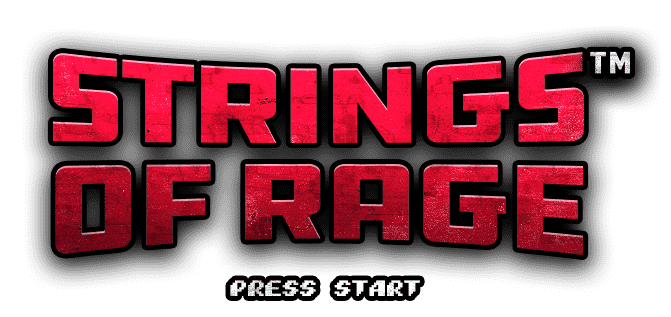
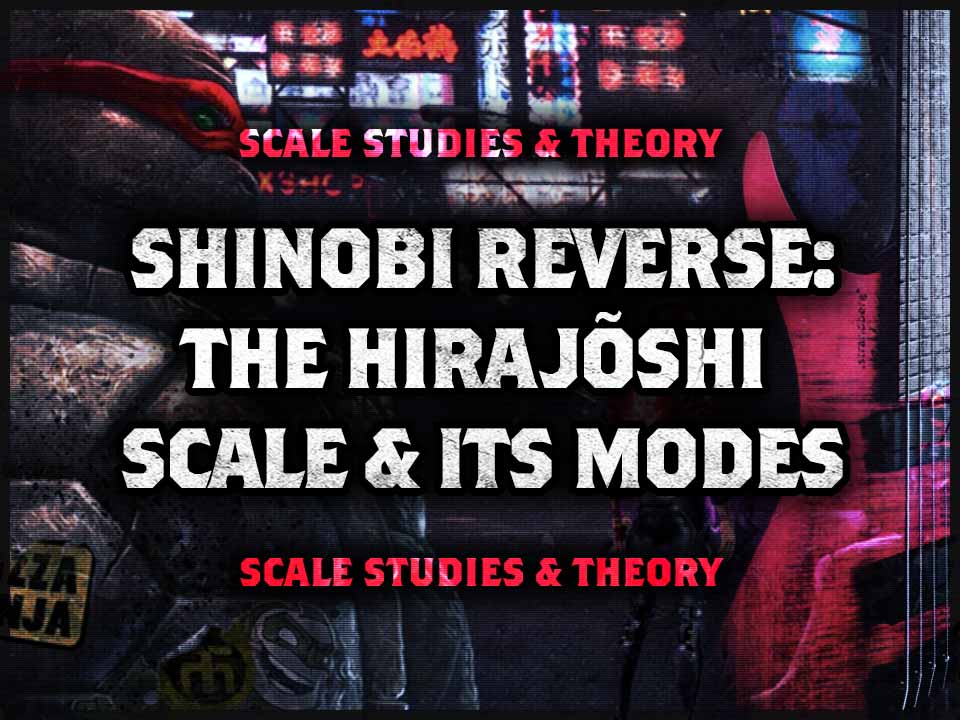
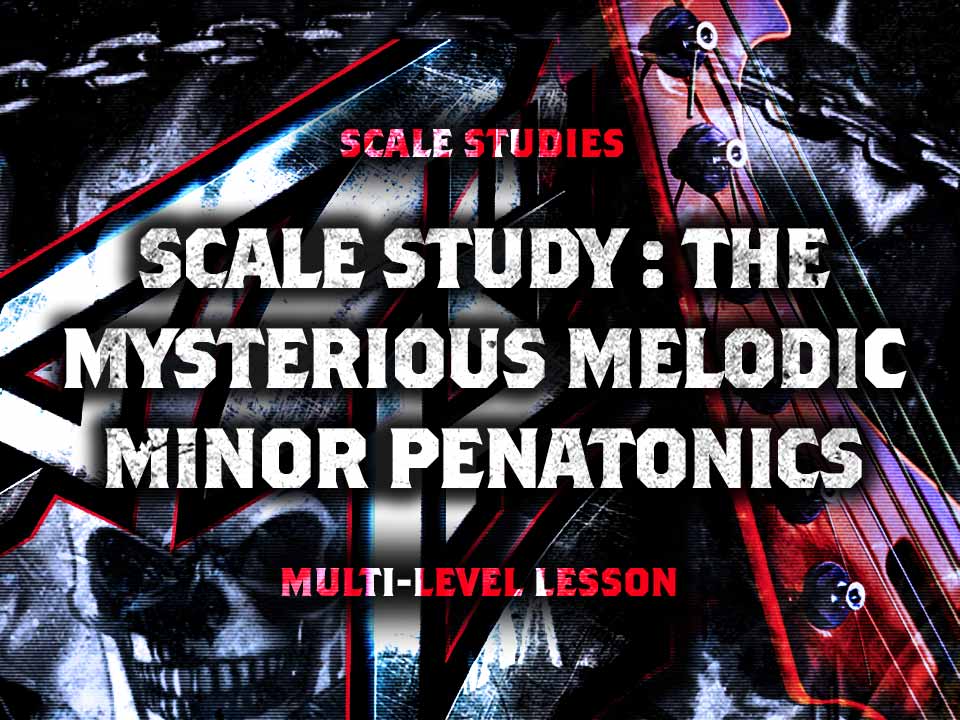

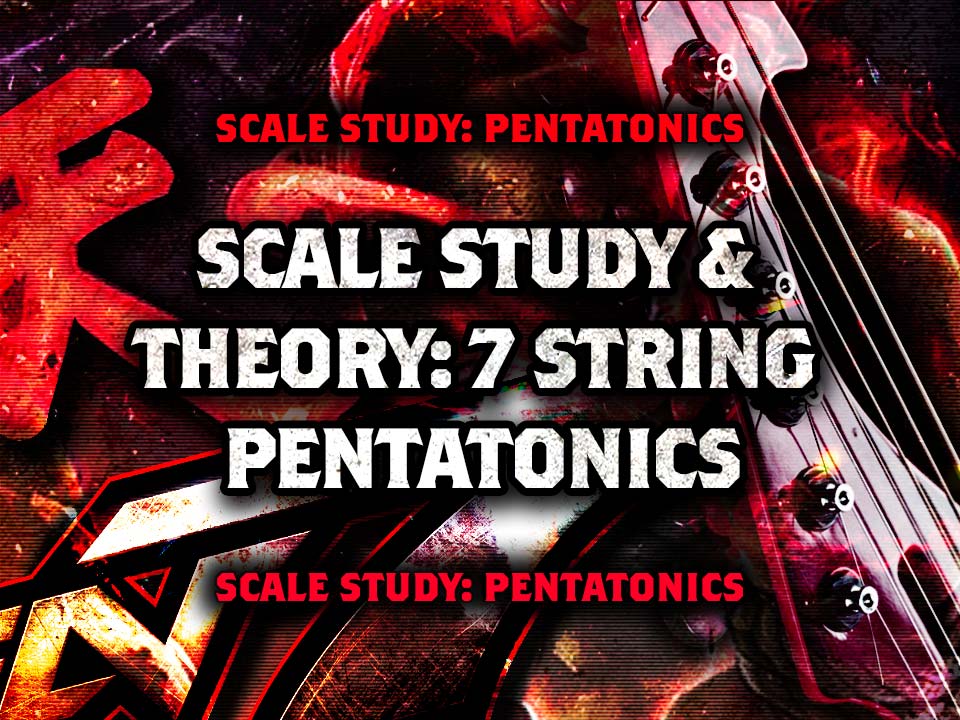
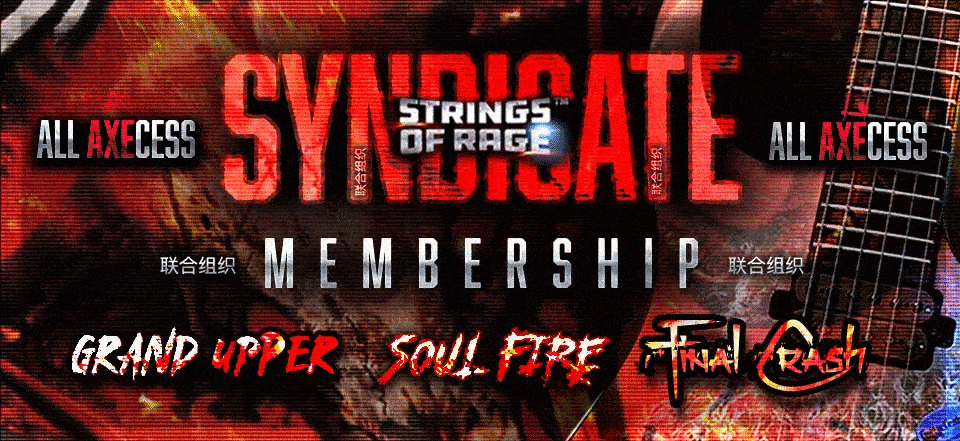






No Comment